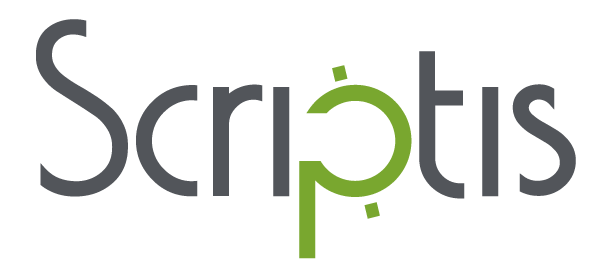Case study: Articulate Storyline 360 translation

Executive Summary
Our client, a global manufacturer, needed Articulate Storyline 360 translation and localization. The source was a set of e-learning courses on business ethics. Target languages included Chinese (Simplified), French, German, Polish, Portuguese (Brazilian), and Spanish (Latin American).

The Challenge
E-learning localization requires both linguistic and technical skills, including:
- Professional translation by subject matter experts
- Bilingual review and proofreading by professional linguists
- Foreign language voice-over recording and editing
- Audio integration and synchronization with animations
- Text reformatting and localization of graphics
- QA and pre-live testing by native-language users
The source training module totaled about 11,000 words with 35 minutes of recorded narration. We had 4 weeks to deliver the finished modules in 6 languages, with a deadline of January 8. In general, the winter holidays create challenges when staffing complex localization projects. Many of our global partners take vacations. Those who remain available have packed work schedules. Maintaining strong relationships with our partners pays off when a project like this arises during a busy time.

Performance
We assembled a team of 12 linguists, 6 voice talents, and 6 integrators, who worked in close coordination with our Localization Project Manager, Ken Farrall. For a project of this size, the translation phase alone would take approximately 6 to 8 business days under a standard production schedule. Our turnaround time of 18 business days mandated careful planning and execution for an on-time delivery.
Source preparation
The project manager assessed the structure and content of the source module for word count, complexity, and localization readiness. He also evaluated the design choices and synchronization between animations and audio to assess the integration workload. (The more “sync points” between audio and animations, the longer integration will take). He also evaluated the source to neutralize any US-specific references.
Articulate Storyline 360 translation requires export of translatable text from the authoring platform. Typically, a project manager runs a pseudo-translation on the export to help anticipate text expansion and formatting issues. This process also helps confirm whether all the content was exported. As a final step, the project manager confirmed the clients’ preferences for pronunciation of names and treatment of acronyms in foreign languages.
Translation, editing, and proofreading
The translators used computer-assisted translation (CAT) tools to translate onscreen text and narration scripts. CAT tools speed the translation process and ensure consistency of terms across all parts of the module.
Text expansion always presents a challenge to e-learning translation and localization. Spanish can require up 30% more characters (and 30% more audio time) to say the same thing as English. This fact impacts most translation projects, but it causes particular problems for e-learning:
- Training sessions must be kept within the same general time limits. Otherwise a one-hour training session in English could take much longer in a western European language.
- If text appears in on-screen graphics, the graphics may need resizing to accommodate additional characters.
How do you reduce text expansion? By partnering with translators who are also skilled writers. As a pundit allegedly wrote, “If I had more time, I would have written a shorter letter.” Narration requires a “publication-quality” workflow, including translation, editing, and review by linguists with experience translating scripts and minimizing text expansion. Since we are certified ISO-17100, every translation project includes project management, translation, revision, and quality control. This ensures the highest quality of localization.
Voice-overs: casting, recording, and post-production
The client approved samples from voice talents prior to recording. The voice talents received scripts and instructions, including timing cues and a pronunciation guide for company names, products, and acronyms. We finalized the full scripts and notes for studio recording after an initial read-through and review. Final voice-overs were then recorded and audio files were edited by studio engineers.
Human voice-over talents were essential to this particular project. However, as the quality of “text-to-speech” (TTS) software improves, clients will soon be able to confidently choose between human narration and automated “computer” narration. At this point in time, human narrators provide more expressive, persuasive, and authentic-sounding audio. And, for this project, they also provided technical support during integration.
Integration of text, narration, and animation
During the voice-over phase, we also planned for integration. Sentence structure varies across languages. Therefore, we sync on-screen animation with audio separately for each language. Our foreign-language voice talents contributed in two ways to the project. In addition to recording the narration, the voice artists identified cue points to mark new sync-points for animations and images. This workflow sped up the integration task to meet the tight deadline.
Integrators synced the audio recordings with the corresponding individual slides. They also adjusted animations and dynamic text to sync with specific words in the audio tracks.
Final formatting, text and images
To create attractive screen views, we resized and reformatted text to compensate for differences between the source and the target languages.
Pre-live testing
An essential part of any e-learning localization project is testing by native-language users. For this project, the client opted for in-house testing and review by in-country employees. Our careful preparation paid off with positive responses. Reviewers only required a few terminology edits and a small amount of reformatting to accommodate text expansion.

Results
The point of careful preparation is to reduce the amount of “back and forth” between ourselves and the client’s team. We met our deadline with very few demands on the client’s own resources. Our client rolled out the localized e-learning modules in January, according to schedule. We continue to provide Articulate Storyline 360 translation and localization services to this client and others. This project demonstrated the value of continuous learning for localization project management. Success requires adapting our workflows to meet the client’s needs and their preferred e-learning authoring tools.
E-learning is an efficient way to train a global workforce for both technical and corporate compliance purposes. For more information on how Scriptis can support your business’s international growth, contact us.
